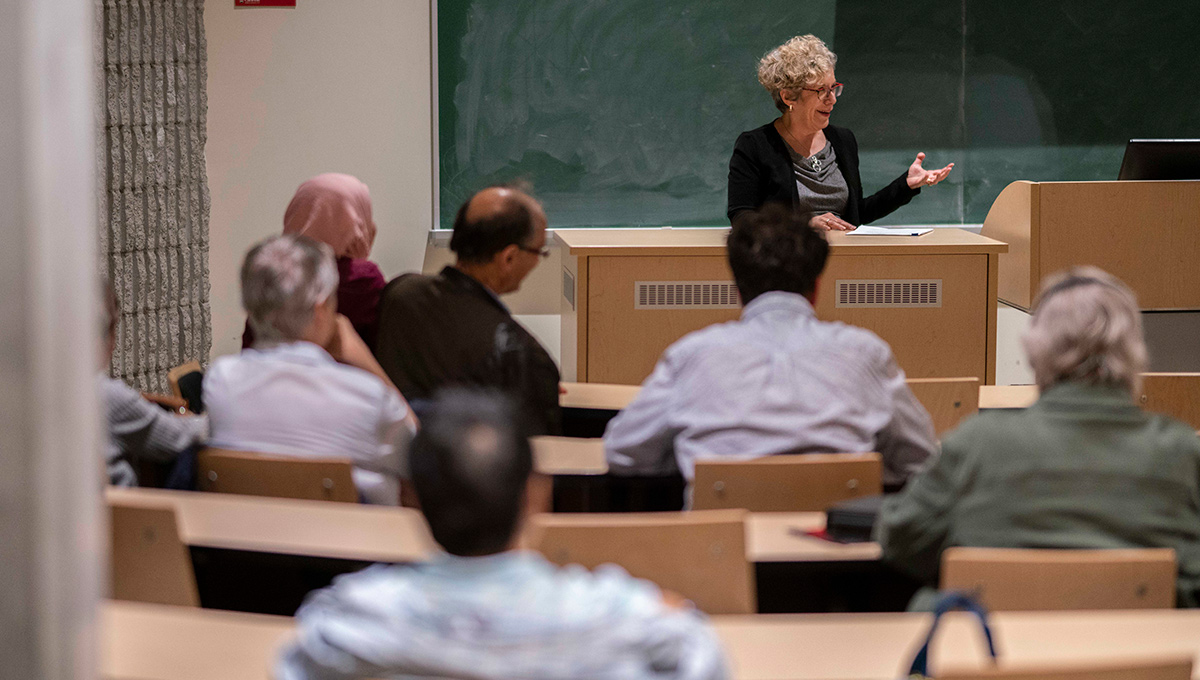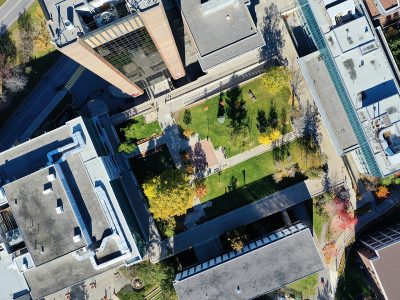By Joseph Mathieu
Photos by Chris Roussakis
It’s easy to think of Leonardo da Vinci, one of the greatest analytical minds in history, as a modern scientist.
But according to Carleton University Art History Prof. Randi Klebanoff, da Vinci’s work and world view were inseparable from the religious society in which he lived.

Carleton University Art History Prof. Randi Klebanoff
“Leonardo’s dedication to the evidence of the senses and the discovery of the world makes us think of him as a secular figure,” she said.
“But it’s important to remember that he was a Christian.”
Klebanoff explored the idea in The Divine Nature of Leonardo, a talk she gave on Sept. 18, 2019 as part of Carleton’s Cinquecento celebrations. Her talk was one in a series to honour and celebrate da Vinci’s life and work, which influenced many fields such as physics, mathematics, health sciences and visual art.

The Universal Genius of Leonardo da Vinci
“We marvel at this universal genius,” she said. “[He was] so accomplished in so many areas that we consider scientific—from empirical studies and practical sciences, such as engineering, mechanics, hydraulics—and also the uncontested master in painting.”
Klebanoff argued that the man’s forward-thinking genius, however, was still a product of the 16th century.
The modern distinction of art as subjective and science as objective were not so distinct in da Vinci’s time. Thinking of da Vinci as a secular scientist misses a complete view of his study of nature, which he pursued in his world-renowned paintings as well as his famous sketchbooks of anatomy and biology.
Klebanoff used the techniques and content in some of da Vinci’s paintings to demonstrate his Christian view of the world. She examined his Madonna of the Rocks, The Virgin and Child with Saint Anne and The Mona Lisa and pointed out their finer details for the audience. The painter didn’t stop at an understanding of the material world, said Klebanoff, but somehow portrayed the mystery of the world’s true nature, which is unseen.
“Beauty was thought to be the manifestation in the world of the perfection of God,” said Klebanoff.
“God, in other words, puts beauty in the world so that the eyes and soul will yearn to him through love. This is what Leonardo is showing.”

The Most Famous Painting in the World
The most famous painting in the world—La Gioconda a.k.a. The Mona Lisa—portrays what Christian art scholars call the “omnivoyant gaze.” Wherever a viewer stands, the painting’s subject appears to be looking at them. As explained by medieval theologian Nicholas de Cusa in the 15th century, this is one way to understand the transcendence of God in all things.
The eyes follow you everywhere, and the gaze is on everyone, intimately, as if it sees no one else. Klebanoff argued that The Mona Lisa and her small smile—is that a smile?—show something beyond direct observation and experience of the natural world.
“What Leonardo is doing, I think, is having us imagine that a kind of switch has been flipped in our normal way of seeing,” said Klebanoff.
“It’s really in his paintings of naturalistic images composed of seemingly impossible coincidences of opposites, the palpably real and the impossible to pin down.”
His paintings prove, she said, that purely empirical research can’t uncover everything there is to find in the natural world. Because, as da Vinci once wrote, painters who study nature’s works find “a way to understand the creator of so many admirable things, and this is the way to love such a great inventor.”
Carleton’s year-long Cinquecento celebration marks 500 years since da Vinci’s death in 1519. Its events and talks celebrate his legacy by examining different aspects of the Renaissance man’s life.
Thursday, September 19, 2019 in Faculty of Science
Share: Twitter, Facebook



